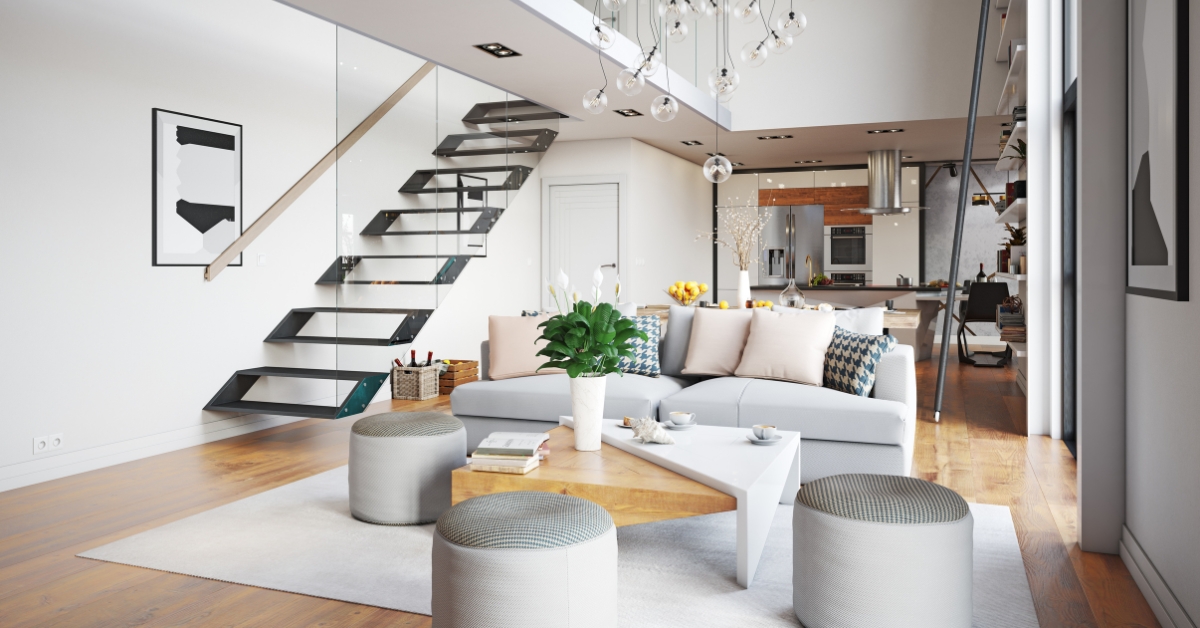Creating a home that feels like you is more critical than ever in a world of mass-produced furniture and fast interior trends. One of the most powerful ways to design a space with soul is by blending vintage and modern elements. But how do you do it without making your home feel chaotic, or like a mismatched antique shop?
The secret lies in developing your personal formula —a unique approach rooted in foundational design principles tailored to your taste and lifestyle. This post will guide you through creating that formula step-by-step, helping you blend eras with confidence and intention.
Why Mix Vintage and Modern? The Secret to a Home with Soul
Decorating entirely in one style or era can make a room feel sterile, like a catalog spread or a temporary showroom. In contrast, a space that mixes old and new tells a story. It feels lived-in, layered, and deeply personal.
Vintage pieces bring:
- Character and craftsmanship
- A sense of history and meaning
- Textural depth and patina
Modern pieces offer:
- Functionality and comfort
- Clean lines and visual clarity
- A backdrop that makes vintage pieces pop
Plus, incorporating vintage is a sustainable choice—reusing existing items reduces waste and preserves design history.
The foundational principles: Your framework for a perfect mix
Before diving into the hunt for unique finds, it’s crucial to establish a set of principles — your “design formula.” These guidelines ensure that your space feels intentional, not haphazard.
● The 80/20 Rule: Finding your ideal balance
Start with the 80/20 rule —80% modern, 20% vintage. This creates a clean, functional base, allowing vintage pieces to stand out as curated accents rather than overwhelm the room. You avoid the pitfalls of feeling like you’re living in a museum or your grandma’s attic.
Example: Picture a sleek, neutral-toned living room with a plush modern sofa and minimalist coffee table. Add a worn Persian rug, an antique armchair, and a vintage oil painting—suddenly, the space has depth, texture, and soul.
Remember, this ratio is a guideline, not a rule. Feel free to adjust to 70/30 or even 60/40 as your confidence grows.
● Create cohesion: Unify your space with a common thread
Different eras can coexist beautifully if a visual thread ties them together. The most accessible method? A consistent color palette. If your space leans neutral—creams, charcoals, muted greens — you can pair a mid-century sideboard with a traditional Victorian armchair, and they’ll feel at home together.
Another approach — define your hybrid style. Whether it’s “Modern Rustic,” “Scandi-Traditional,” or “Minimalist Maximalism,” naming your fusion gives clarity and direction as you shop and style.
● The art of contrast: Let your pieces shine
Contrast isn’t just okay — it’s the magic. When you place a sleek, modern lamp on a heavily patinaed wood table, you highlight the uniqueness of both. Opposites create tension, and tension creates interest.
Try:
- Abstract modern art above a baroque fireplace
- Transparent acrylic chairs around a 19th-century farm table
- A vintage chandelier above a minimalist kitchen island
Let old and new play off one another — they don’t have to match, but they need to speak.
● Mastering scale and proportion
A visually balanced room isn’t about matching sizes but about harmonizing scale. A tiny vintage stool will disappear beside an oversized sectional. But a commanding vintage cabinet? That’s your anchor.
Tips:
- Avoid clustering too many small items; vary the scale for visual interest.
- Balance chunky modern pieces with equally weighty vintage ones.
- Consider the room’s overall silhouette—does it feel lopsided or harmonious?
A practical guide: What to buy new vs. what to buy vintage
Now that you’ve built your framework, how do you shop wisely? Some pieces are better sourced
new for comfort and reliability, while others shine best when they carry a bit of history.
The ‘New’ Foundation: Prioritize Modern for Comfort and Function
For high-use, foundational pieces, go modern:
- Sofas: Better ergonomics and cushions
- Beds & Mattresses: Modern sizing and support
- Dining chairs: Everyday use needs durability
- Gaming/Office chairs: If you work or game from home, invest in ergonomic seating with proper back support and breathability – he best mesh gaming chair designs offer comfort for long sessions
Think of these as your canvas. You can layer in soul and character with a reliable foundation through vintage accents.
The ‘Vintage’ Soul: Sourcing Your Personality Pieces
These are your statement-makers. The pieces whisper stories and ask guests, “Where did you find that?!”
Best vintage categories:
- Lighting (e.g., Art Deco sconces, mid-century floor lamps)
- Side tables, dressers, and consoles
- Wall art and mirrors
- Rugs and textiles such as valance curtains from Country Village Shoppe
- Accent chairs (especially reupholstered in modern fabrics)
Mix modern prints with antique portraits, or add a fringe-trimmed pillow to a sleek sectional—the magic is in the mix.
A word of caution: What to triple-check when buying vintage
Not all vintage is created equal. Here’s what to vet closely:
- Sofas & chairs: Check the springs, frame, and seat depth. Looks can be deceiving.
- Dressers: Open all drawers. Sticky or wobbly ones can be a dealbreaker.
- Beds: Frame stability is key. Also, confirm dimensions—vintage beds may not fit modern mattresses.
Inspect thoroughly before committing, especially for pieces you’ll use daily.
Where to find your vintage treasures
Offline:
- Estate sales
- Flea markets
- Charity shops (especially in wealthier neighborhoods)
- Curbside finds—some gems are free if you’re vigilant
Online:
- Facebook Marketplace
- Chairish
- Vinterior
- Craigslist, Gumtree, OfferUp
- Instagram vintage sellers (search via hashtags like #vintageinteriors or #eclectichome)
Be patient. The best pieces often appear when you’re not looking too hard. And remember: If you don’t love it, don’t buy it.
Frequently asked questions
Can you mix traditional and modern design?
Yes! Use the 80/20 rule as a baseline and tie pieces together with a consistent color scheme or materials. It’s about balance, not uniformity.
How do you mix classic and modern art?
Create a gallery wall that combines both. You can use matching frames for unity or group by theme. Juxtaposition adds richness and personal flair.
Your home shouldn’t look like a page from a catalog—it should feel like a chapter from your life. By blending modern function with vintage soul, you create a layered, intentional, and deeply personal space. Follow the formula—start with a modern foundation, mix in vintage for texture and story, unify with color, and layer with care. But most importantly, trust your gut. Your taste is your superpower. Your home should evolve like your story—piece by piece, layer by layer.







Leave a Reply